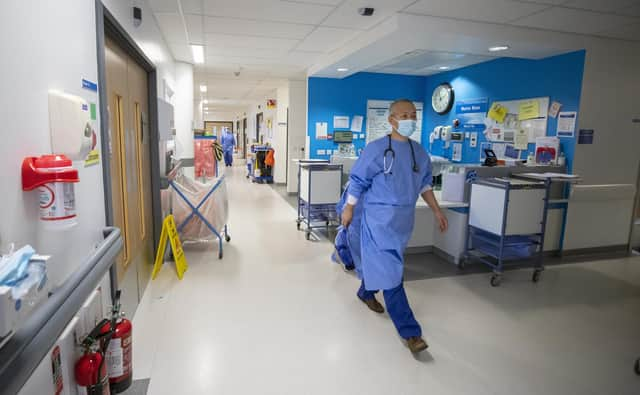Rise in patients arriving at University College London Hospitals Trust A&E by ambulance


More patients were taken to A&E at University College London Hospitals Trust by ambulance last week, figures reveal.
NHS England’s national medical director warned the pressure on the health service is still “intense”, as the country recorded its busiest week for ambulance A&E arrivals this winter.
Advertisement
Hide AdAdvertisement
Hide AdNHS data shows 390 people arrived at University College London Hospitals NHS Foundation Trust A&E by ambulance in the week to January 23 – up from 367 the week before.
Of the arrivals last week, nine (2%) waited more than 30 minutes before being handed over to A&E staff, with two (1%) waiting more than an hour.
However, this was down from 14% waiting over half an hour the week before.
The NHS has a target of 15 minutes for ambulance handovers, but only delays longer than 30 minutes are recorded.
Advertisement
Hide AdAdvertisement
Hide AdThe data also shows an average of 136 staff were off sick because they had Covid-19 or were self-isolating due to the virus each day in the week to January 23 – accounting for 32% of absences.
This was up from the week before, when 18% of absent staff were off for Covid-related reasons.
Across England, an average of 72,000 NHS workers were off sick every day last week, with 42% absent due to Covid – though this was down from 46% the week before.
Professor Stephen Powis, NHS England’s national medical director, said: “While it is positive to see more NHS staff back at work, pressure on the NHS is still intense, having seen the busiest week for ambulances taking patients to A&E since the start of December – all while pushing to deliver as many routine checks and procedures as possible, including vital diagnostic checks.
Advertisement
Hide AdAdvertisement
Hide Ad“Our staff have already had what feels like a long winter, but despite everything they have had to contend with, they continue to step up as they always do.”
He added the NHS was continuing to work closely with the adult social care sector to ensure patients are safely discharged.
Separate figures show an average of 90,600 adult general and acute beds were open each day in the week to January 23 across hospitals in England, with 84,300 (93%) occupied.
At University College London Hospitals Trust, 465 beds were occupied each day on average last week – 96% of the 485 available.
This was broadly in line with the previous week.
Advertisement
Hide AdAdvertisement
Hide AdSaffron Cordery, deputy chief executive of NHS Providers, the body that represents health trusts in England, said the figures showed hospitals were “operating under sustained pressure,” despite a recent fall in Covid-19 cases.
She added: “We know that success in reducing delayed discharges is dependent on having enough staff to facilitate discharges and support patients once they are ready to return home or to other community settings.
“That’s why we are pleased to see that the number of staff absences due to Covid-19 is now decreasing after the Omicron peak, although it’s important to recognise that the total number of staff absences remains high.”